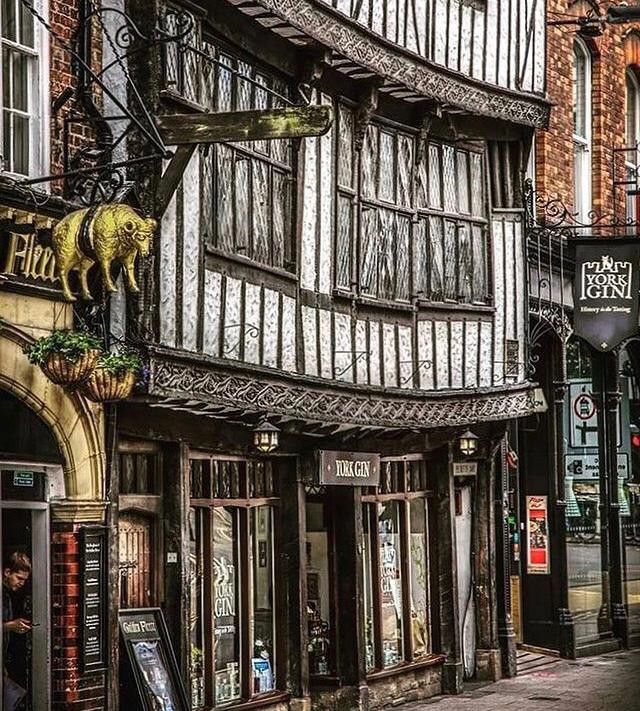A short history of gin
This gin history gives you the story of our favourite spirit without going into too much detail.
You don’t need to know any history to enjoy our little story. And, after reading it, you'll appreciate your modern gin and tonic a little more – how it's made in a nice clean distillery rather than a slum, and without the addition of sulphuric acid! Let’s all raise a toast to our modern delicious gin – and how far it has come in its 300-year history.
And if just the thought of gin's history makes you thirsty, pop into the York Gin online shop
Dutch roots
The word ‘gin’ comes from the Dutch word ‘jenever’ which means ‘juniper’. The Dutch made spirits distilled with juniper berries from the Middle Ages, so we’re on fairly safe ground to say gin started there.
In the Middle Ages, it was thought that juniper could ward off things like the Black Death. Bubonic plague killed off a third of Europe’s population – along with this myth.
Eventually, people realised that distilled spirits were nice because they got you drunk rather than warding off contagious and fatal diseases. 17th Century English soldiers fighting in the Thirty Years War in the Netherlands apparently called jenever ‘Dutch Courage’ because it helped to steel them before battle, for example. Poor buggers.
The soldiers who survived brought the drink back to England - and it developed into what we know as gin.
But it wasn’t until William and Mary took over the crown after the ‘Glorious Revolution’ of 1688 that gin really started to become popular in England.
One reason for its popularity was that William was Dutch, and the upper classes wanted to show their support for him by drinking a Dutch spirit. He also imposed a blockade on French imports – brandy among them. Beer was also heavily taxed. So, the price-sensitive urban poor moved on to gin. As you would too in their position.
When Queen Anne (who reigned from 1702 to 1707) removed a restriction on distilling gin in London, all hell broke loose - and hundreds of back street distilleries appeared. These were unlicensed – and created some very dodgy gin. No wonder the inhabitants of Hogarth’s Gin Lane (1751) look so unhappy. They most certainly weren’t drinking a super-premium hand-crafted delight you’ll find on the shelves today! They were more likely to be drinking ‘Mother’s Ruin’ – even the most sugary and horrible ‘gin liqueurs’ of today don’t taste as bad as 18th Century backstreet gin.
Successive governments in the 18th century panicked that the Gin Craze was getting out of hand so they tried to tax and restrict its distillation – with varying degrees of success and rioting.
One slightly worrying issue about the early centuries of gin’s history is that it was often distilled with turpentine and sulphuric acid. We’re happy to report this isn’t the case any more. Until the mid 19th century gins were sweeter than we are used to today – sugar was used to mask the horrendous taste of the actual gin. Old Tom gin is a case in point. Today’s Old Toms are a far cry from their 19th century forebears (thank goodness). We should know, because ours won Best English Old Tom at the World Gin Awards as well as multiple gold medals.
19th Century Improvements & Empire
Distilling technology in the 19th Century helped the development of London Dry gin – the most famous type of gin.
Gin became popular among the Brits in the tropical areas of the Empire when it was added to the tonic water that contained anti-malarial quinine. The quinine was extremely bitter, so the gin helped smooth its passage down the throat. Bored, stressed and sweaty administrators of Empire now had a G&T (or several G&Ts) to look forward to after a day’s imperialism and before dinner each evening.
Modern times: Martinis and back to sweet?
And since the 19th Century, gin has never really been out of fashion. Cocktails like the Martini have given gin a romantic and even heroic air (although most bartenders would advise you to have your Martini stirred rather than shaken – unlike Mr Bond.)
The recent ‘Gin-aissance’ has seen standards improve - but weird and sometimes not so wonderful concoctions have also appeared (Bubble-gum or Victoria Sponge gin anyone?) These have stretched the definition of gin – as have gin liqueurs, many of which don’t actually have any juniper taste in them at all.
But generally speaking, gin in the 21st Century is an exciting and innovative drink – quality has risen, the choice is huge, and there’s only one certainly, given the incredible history of gin over the past 300 years: there will be more change ahead.
If you’re in the UK, the best 45 minutes of Gin Radio is the BBC Radio 4 In Our Time programme called The Gin Craze, with York University’s Emma Major. A perfect 45 minutes for anyone who’s remotely interested in gin’s history.
If all this history has made you thirsty, you probably need to visit the York Gin online shop
More gin-fo and helpful articles
What is gin and what are the different types of gin
Gin jokes, one-liners and puns
Which glass should I use for my G&T
What is the best garnish for my G&T
How to choose the best gin for you




